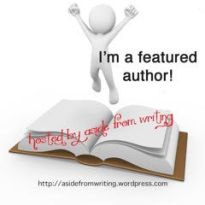
Inuyasha Jewel Shard
It isn’t easy setting up a story where you have to get a bunch of things to make one thing or stop someone. There’s the risk of tedium, repetition, and getting visited by the irritable McGuffin fairy. He doesn’t take or leave anything, but just sits at the foot of your bed staring at you with disdain. So, what are some ways to use this story line without falling into the abyss?
- Plan out most, if not all, of the needed items beforehand. You don’t want to run the risk of getting stuck in a loop because you can’t figure out where to stop. Choose a number and stick to it. If you want to add more stories then you can always have one get lost and need to be found again. Maybe something happens to put this story on the shelf for a book or two. Just make sure you aren’t trying to have the characters gather 100 things. This really only works for books aimed at really little kids who love repetition.
- Give a better reason for the protagonists to find these things besides ‘it is the only way for the story to progress’. Sure, it can go that way, but you need to give them initial reason to go on the hunt. This can range from wanting to save the world to a destiny, but you really want to sit down and think. Perhaps the hero knows using all of these things together can save the world while the user dies, so he’s out on a suicide mission. This gives a depth to him and the story. I mean, what happens if he reaches the end and decides that he wants to live?
- Do not actually name the items McGuffins. Seriously, that’s really only done with parodies and it’s not that original.
- Try to create a variety of ways that these things are gained. They can be in dungeons, held by villains, swallowed by monsters, prizes in competitions, and whatever else your imagination creates. Much of this depends on how well-known these items are too. If the world is aware of them being important then you will have a bigger hunt. If not then one of them could be the third place prize in a World’s Most Beautiful Kneecaps pageant.
- You really need to have some competition for these items. It could be the antagonist out to destroy/take them for himself, which is the most common. After all, he/she/it probably knows about this potential threat. Then again, there is a history of villains not realizing that there are these powerful items designed specifically to destroy their plans. Another option is a rival who wants these things for their own ends and have stumbled onto their existence. This allows you to create tension on if the protagonist will be the one to get each item or if they will fail at some point.
- It is not necessary that every piece of whatever is being gathered has it’s own power. I know this is tempting because many people see the gaining of a new ability as character development. You can easily make these things useless unless they are together, which forces your heroes to become stronger through other means. Now, I’m not saying you can go the route of ‘one item, one power’. Just make sure you don’t use this in place of character development.
- Come up with a history for these items to help the audience understand why they are so important. Who made them? Have they been used before? How did they get separated? These are questions that will give more depth to the world and the overall story. Stating that they are important because they are important won’t help with readers who want more meat on their fiction.





Very practical tips, Charles. Loved the one about not calling the McGuffin a McGuffin.
LikeLike
Thanks. I’d be surprised to learn nobody has done that.
LikeLiked by 1 person
😀
LikeLike
I’m loving the exploration of this plot. I think it has a lot going for it.
LikeLiked by 1 person
Thanks. I’m happy it’s getting so many responses.
LikeLiked by 1 person
Kneecaps of Destiny!!
LikeLike
Now I’m just imagining a fantasy story taking place in a retirement home.
LikeLiked by 1 person
😀 Different strokes for real old folks.
LikeLike
That brings to mind the wrong type of fantasy genre.
LikeLiked by 1 person
Reblogged this on Chris The Story Reading Ape's Blog and commented:
More practical advice from Epic Fantasy Series Author, Charles 👍
LikeLike
Thanks for the reblog.
LikeLiked by 1 person
Great article, Charles 👍😃
LikeLike
I agree with coldhandboyack. Great tips. I’m glad you compiled them. All well thought out. The history aspect seems especially important. The only thing I would add is to avoid getting lost in the history telling. Also make the search satisfying for these items. In one trilogy I read the search for one of three items took up almost the entire trilogy. The other two got the short end of the stick. And they were all supposedly of equal weight. It felt like the last two were forgotten about until the last 50 or 60 pages.
LikeLike
I’ve seen many series where the last few items are practically rushed. It can work if the other side is getting them too, so the number of items drops faster. Wonder why that happens. Maybe the authors felt rushed all of a sudden?
LikeLiked by 1 person
I think that series is the author’s first. He included a ton of information about the world, which took up a lot of space in the second book. And the third book was about a thousand pages. In hindsight, I wonder if he would have changed the third book to include more information on the search for the other items.
LikeLike
Or if he should have gone for 4 to 5 books. Some authors get locked on trilogy even if they need a bit more.
LikeLike
I have been struggling with this very issue in my last project and it failed miserably. I know it failed miserably, but I couldn’t see “how” until reading your post. My project was rejected, and rightly so. I was already going to give it a little rest before going back to it, and now there is a plan of action thanks to this post. Thank you! I feel a little more encouraged now.
LikeLiked by 1 person
That’s great that you can go back to it. Mind if I ask what the issue was? I understand a no if it involves spoilers.
LikeLike
Oh, not at all! It was suggested changing the tense. Currently it is in third person omnicient. First person narrative or some other tense. The story itself was OK, and they liked the main character. It wasn’t a great review, but it was a review nonetheless!
LikeLike
Great way of looking at it.
LikeLiked by 1 person
Wow. It’s so cool that this post has helped you see how you can improve your project.
LikeLike
It did!
LikeLike
Reblogged this on Author Don Massenzio and commented:
Check out this post from Charles Yallowitz with 7 Tips to Working with a Collecting Quest Story: Read the Whole Set
LikeLike
Thanks for the reblog.
LikeLiked by 1 person
You’re welcome
LikeLike
Almost as important as who made the item, I think, is how it was divided and scattered. Was there some omen of disaster about it? A giant dropped it and sneezed, blowing the fragments everywhere? Was a secret hiding place built for each bit of it? Or are we gathering rare herbs that only bloom on the night of a Super Blood Wolf Moon? (I just get a kick out of mentioning that we have a Super Blood Wolf Moon later this month.)
I guess this is my way of saying that you’re right, and the source/creation of the original artifact is just as important as the purpose of the characters who are searching for it.
PS, I would totally have one piece be hanging up in the middle of a spider web somewhere. People walk by it for days, “Where’s the thing? I know it’s around here somewhere!”
LikeLike
Keep forgetting about that Super Blood Wolf Moon. Really need to make sure I get to see it.
That is a good idea with the spider web. I would go with a bird nest or made part of a tree grew around one. Just have them all turning up in odd places of nature.
LikeLike